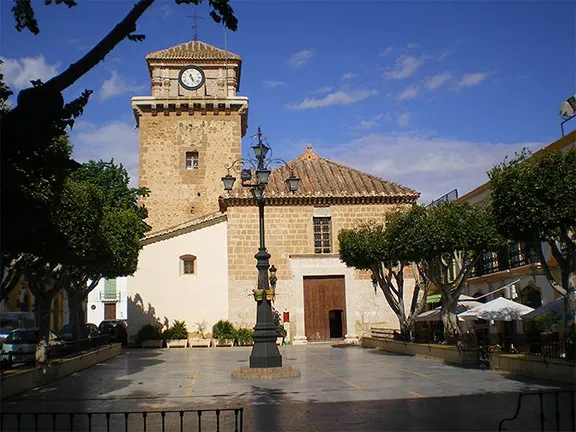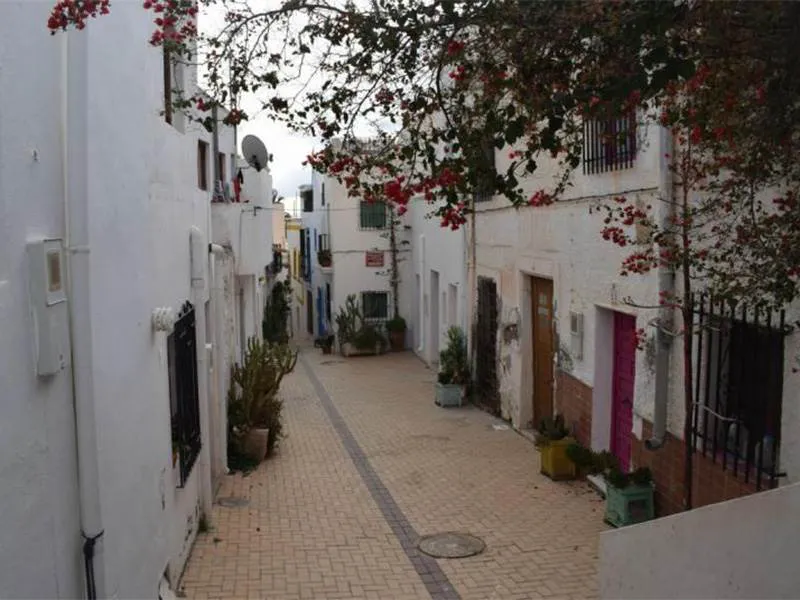Nijar, on the edge of the Cabo de Gata is known for pottery, chinado ceramics and Jarapa rugs. Níjar has been described as one of the most picturesque towns in Spain
By Nick Nutter | Updated 11 Apr 2023 | Almería | Villages |
Login to add to YOUR Favourites or Read Later


Iglesia Parroquial Santa Maria
On the northern outskirts of the Cabo de Gata – Níjar Natural Park, Níjar is a small town in the southern foothills of the Sierra Alhamilla. Although not within the boundary of the park itself, Níjar is an excellent location from which to explore the semi-arid zones of the park and the deserts of Tabernas. Most of the Cabo de Gata Natural Park lies within the huge municipality of Níjar.


Ayuntamiento Nijar
During the Mesolithic and Neolithic periods, the area enjoyed a little more rainfall than it does today. Despite this, the area was only thinly populated and remains so to this day. A series of tholos containing eleven burials in the Barranquette area of the municipality date back to 2330 BC, the copper age, during which the Los Millares people were active and there are signs of later, bronze age settlements. The Romans were interested in the salt processing potential of the Cabo de Gata coast. It was the Muslims, however, that fully exploited the land.


Street scene Nijar
The Muslims introduced a sophisticated system of wells, called norias, and water reservoirs called aljibes. They used these to irrigate the land. You will see aljibes scattered about the landscape all over the Cabo de Gata and their irrigation ditches in the vicinity of Níjar still water the orange groves and vegetable plantations. There is an interesting Museo de Aqua at Níjar that shows the history of water management in these arid areas.


Street scene Nijar
When the Muslims left Andalucia, life continued in Níjar pretty much as it had for centuries. Pirates made occasional raids and, in 1572, it was felt necessary to build a watchtower, Atalaya de Níjar, in the northern part of town. The tower was part of the defensive wall around the town of which only a few ruins remain. Another older, tower became part of the church bell tower in 1560. The Iglesia Parroquial Santa Maria also contains some wonderful examples of Mudejar woodwork.


Video By: Julie Evans


Street scene Nijar
Today the economy of Níjar still revolves around agriculture with the addition of ceramics and textiles and tourism. The ceramics are characterised by the colours blue and green which are produced by a technique known as ‘chinado’. As for the textile industry- this is still very much a cottage industry with looms in private homes manufacturing rugs and blankets. The traditional multi-coloured Jarapa rug, that dates back to the Muslim period, is still made using the leftover wool from other products. You will also see products made from Esparto, everything from baskets to sandals and bonnets. Esparto grass was once widely grown in Almeria and was an important part of the economy. Today only a few older people continue the tradition.
The colourful artisan shops, bustling bars and restaurants, against the backdrop of white houses, clustered around the church, is typical Andalucian. Níjar has been described as one of the most picturesque towns in Spain.